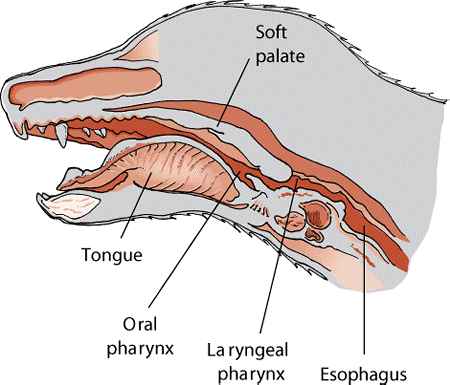Health issues to watch with your Chihuahua
Chihuahuas are both generally healthy breeds but there are some issues that are common in the breed. We health test the parents and DNA screen them to remove as much risk as we can from our lines, but some conditions can crop up unexpectedly and some, sadly, we see all too frequently from other dogs bred by breeders who are more interested in selling puppies than improving the health of their breed.
A note about health information on this site...
The information on this site is by no means exhaustive but includes some of the common medical issues you need to be aware of. You should always consult with your vet or your breeder if you are unsure about any issue affecting your Chihuahua or your Pomeranian.
If at any time your pup is displaying unusual symptoms, do not hesitate to seek veterinary attention. Far better to pay an unnecessary after-hours fee and have a healthy dog, than be mourning the loss of your beloved pet for a condition that could have been treated if presented sooner rather than later.
The information provided here is a basic guide only, and as always, follow your vet’s advice, or seek a second opinion if necessary. Please do not ever rely on social media for medical advice when it comes to your dog.






Patellar Luxation
Patella luxation is a common problem Chihuahuas. Roughly 25% of the population suffers from this genetic condition which responsible breeders will screen for and not breed from afflicted parents.
Patella luxation can become progressively worse over time and can be recognized by characteristic hopping as affected dogs intentionally try to keep weight off a problematic leg. Instead of walking or running, a Chihuahua suffering from this condition will typically hold up their leg (usually the back) because the kneecap locks up and is painful to walk on.
Treatment options are limited. Chihuahuas with Grade I or II patella luxations should be closely watched. High jumps can frequently cause their kneecap to slip out of its place and lockup. The dog needs to avoid placing pressure on the leg with the luxation. For dogs suffering from grade III or IV patella luxation, surgery may be recommended depending on the severity of the condition.
Cryptorchidism
Cryptorchidism (retained testicle) is a hereditary condition that can be passed on from affected sires and dams to their male and female young (only the male offspring can actually display the disorder because female offspring do not have testicles, however, affected female offspring can carry the genes through to the next generation thereby passing the disorder on).
Certain congenital abnormalities are linked to cryptorchidism. These include patella luxation (dislocated kneecap), shortened or kinked tail, tetralogy of Fallot (a life-threatening heart defect), tarsal deformity (abnormal legs), microphthalmia (abnormally small eyes), and upper eyelid agenesis (eyelids that don’t develop).
Click here for further information.
Dental care
Dogs in the wild chew all the time and their teeth need the stimulation of chewing for good dental hygiene. Chicken necks daily and sometimes deer-hide chews, deer, lamb and pig ears. Kong® toys or toothbrush shaped Greenies® are also excellent chewing choices. These clean their teeth and importantly, work and develop neck and jaw muscles.
Chihuahuas often need to have retained baby teeth removed at about 6 months. If left in, they will affect the position of the dog’s adult teeth, the formation of their jaw and increase the likelihood of dental problems later on.
They also require a dental under general anaesthetic every 2-3 years to remove tartar buildup and preserve their gum health.
Poor dental hygiene can cause heart problems later in life and significantly shorten a dog’s lifespan.
Gum disease is a quick way for bacteria and infection to get into the bloodstream, where it can lodge in the heart and in the kidneys. Congestive heart and kidney failure are two of the leading causes of death in older Chihuahuas.
It is vital to keep a Chihuahua’s teeth and gums healthy to ensure a long and happy life.
Anal Glands
Anal glands are the two small, grape-shaped glands located just under the skin at four o'clock and eight o'clock to the anus. The fluidy, odoriferous material they normally produce is used by dogs, cats, and other small mammals to lend a unique scent to their stool, thereby identifying it as their own.
In Chihuahuas the ducts into the gland can become blocked and instead of emptying each time the dog defecates, they fill up and can become quite painful. If you ever see a dog ‘scooting’, or scraping their bottom along the ground, this is usually due to full or blocked anal glands. It is a popular myth that this behaviour is a result of worms, but in 99.99% of cases, it means they need their anal glands emptied.
Reverse sneezing
The correct name for this is inspiratory paroxysmal respiration. It sounds awful - like the dog is choking or has something stuck in their throat and is quite common in Chihuahuas.
It generally occurs because the soft tissue at the top of the dog's mouth (the soft palate), catches over the cartilage flap that covers the windpipe (trachea) during swallowing (the epiglottis). This causes a vacuum to occur in the throat and leads to the “reverse sneezing”.
The dog should sort it out themselves after a minute or two. You might be able to help by covering their nose (effectively making them hold their breath) and scratching their throat. Lightly blowing in a Chihuahua’s face can help, too, as it forces them to swallow a couple of times, which can clear their throat and stop the reverse sneezing.
If the reverse sneezing is prolonged or leads to them fainting from lack of air (syncope), it must be checked by a vet as there may be something more serious going on e.g. a collapsing trachea.






